Physical Address
304 North Cardinal St.
Dorchester Center, MA 02124
Historically, neonatal intensive care units (NICUs) have been designed as open-bay units with multiple patient beds in a room. However, the trend has shifted toward designing units with single-patient or single-family rooms.
Single-family rooms have facilitated a reduction in auditory and noxious stimuli and improvement in positive stimuli to support appropriate development.
Parents and families have reported increased engagement in the care of their infants.
In NICUs with single-family rooms compared with open-bay NICUs, maternal feeding and infant growth seem to have improved.
Care in single-patient rooms was expected to reduce infection rates, but the evidence for such improvement is uncertain.
Single-family rooms have improved parent involvement but may have created new challenges for caregivers. The introduction of alarms may help by alerting staff members about changes in the clinical status of the patients and facilitating timely intervention.
Historically, neonatal intensive care units (NICUs) have been designed as open-bay units with multiple patient beds in a room, a design that was introduced in the 1940s. The trend has shifted toward the inclusion of parents with neonatal care. Thus units consisting of single-patient or single-family rooms (SFRs; many of which include a reserved space for parents inside the patient room) required new construction. This configuration for neonatal care units was introduced as the ideal design in the 1990s. The new design reflected the general trend in healthcare toward patient and family satisfaction by emphasizing privacy and a feeling of individualized care, but by design, it neglects the elements that aid staff in caring for the patients, such as visibility, ease of access to patients, and efficiency of caring for multiple patients. The movement represented a change in focus away from the needs of staff and toward families’ needs, which in many cases are contradictory.
Alarms are designed to alert staff members to patient status changes and allow for intervention as necessary. Caregiver alarm fatigue, caused by sensory overload and resultant decreased or delayed responsiveness to alarms, can have adverse effects on patient safety. Exposure of nurses and patients to alarm sounds was found to be 44% higher in the open-bay style NICU ( Fig. 1.1 ) than in the SFR-style NICU ( Figs. 1.2 – 1.4 ), potentially with effects on both patients and staff. Excessive alarm exposure may also cause nurses to increase upper alarm limits to decrease the frequency of alarms, resulting in patient oxygen saturations being outside of the recommended ranges. Infants experience greater than 80% of their noxious noise exposure from alarms, which can be harmful in many ways, including affecting patient cardiopulmonary stability and sleep-wake cycles. ,
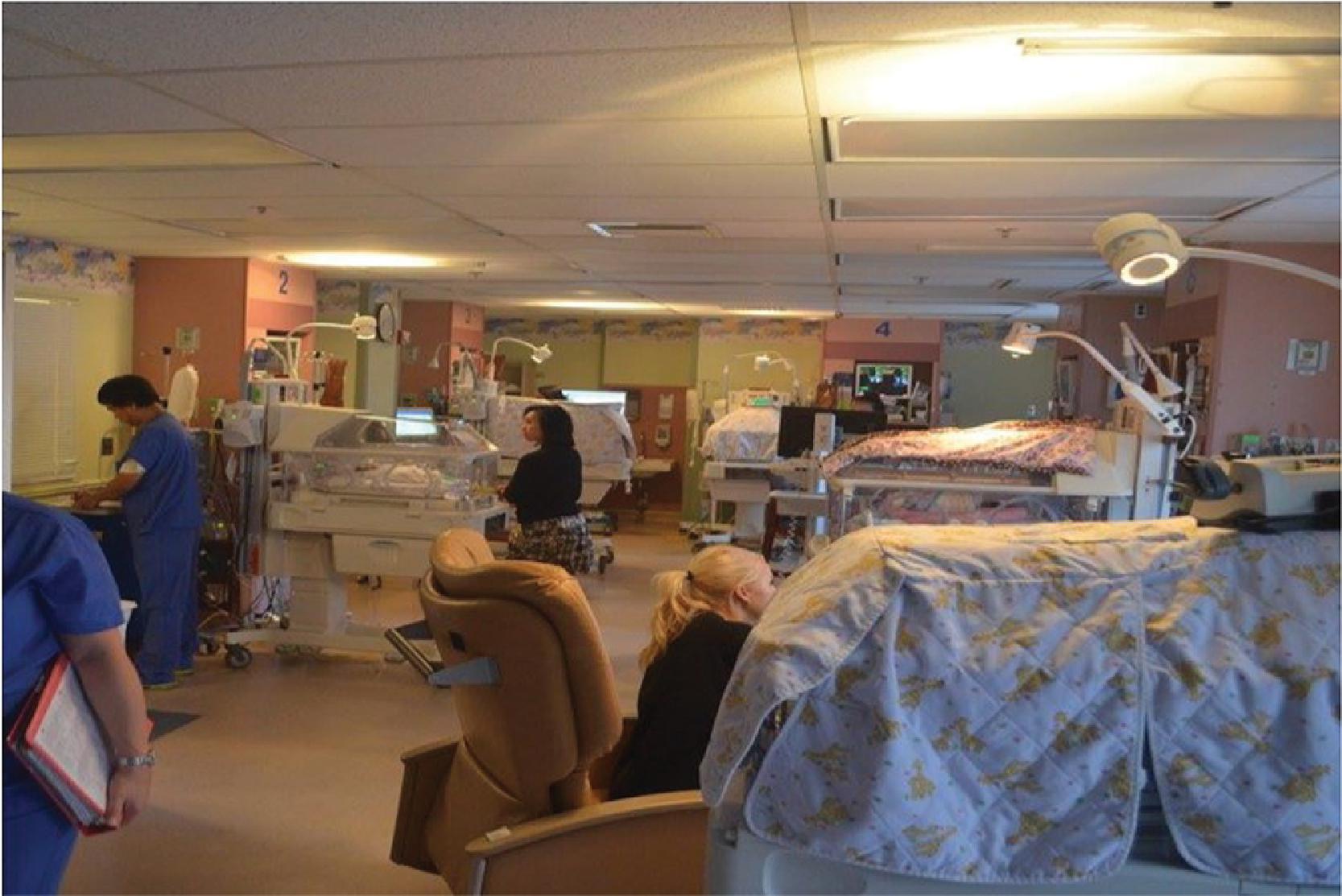
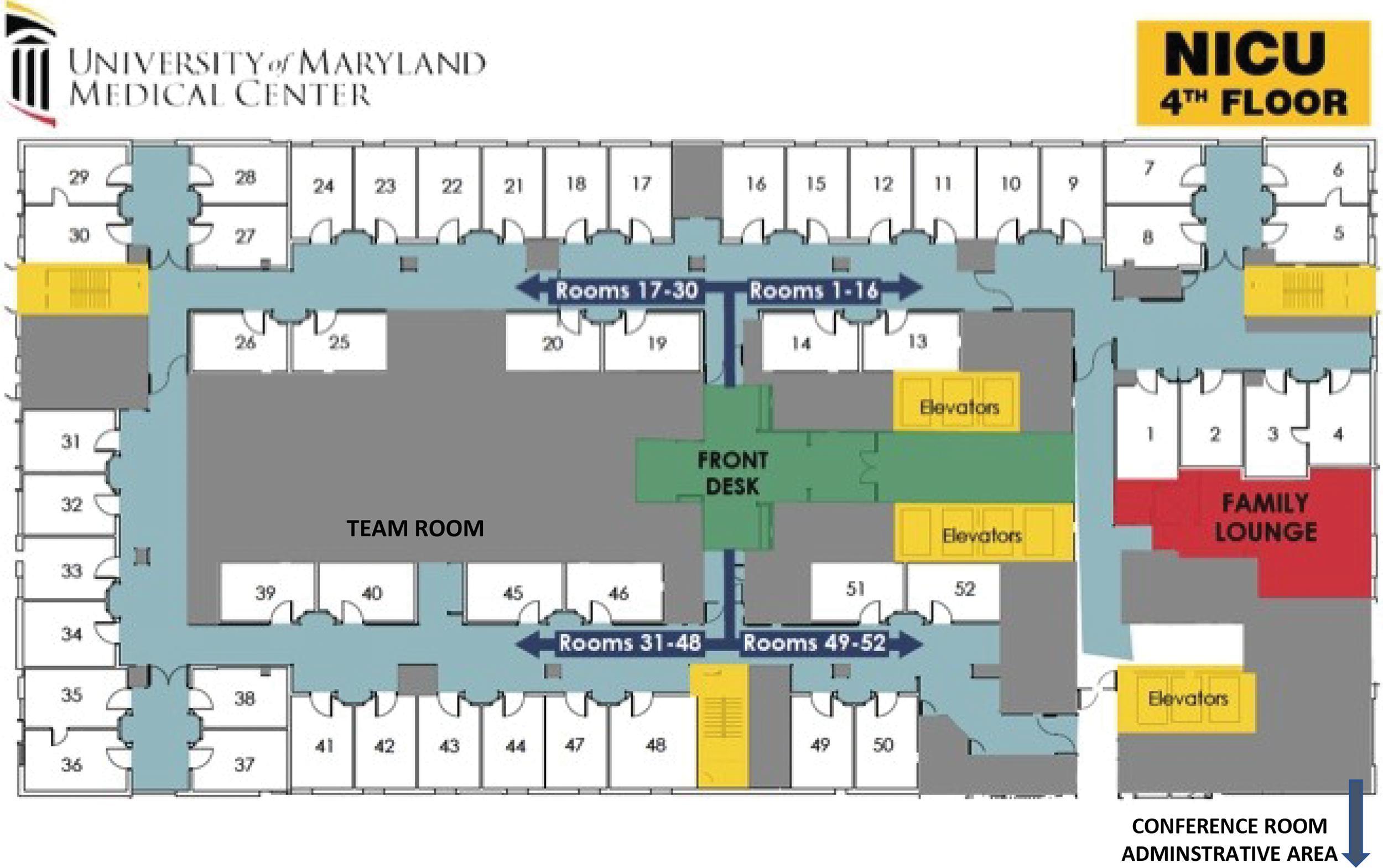
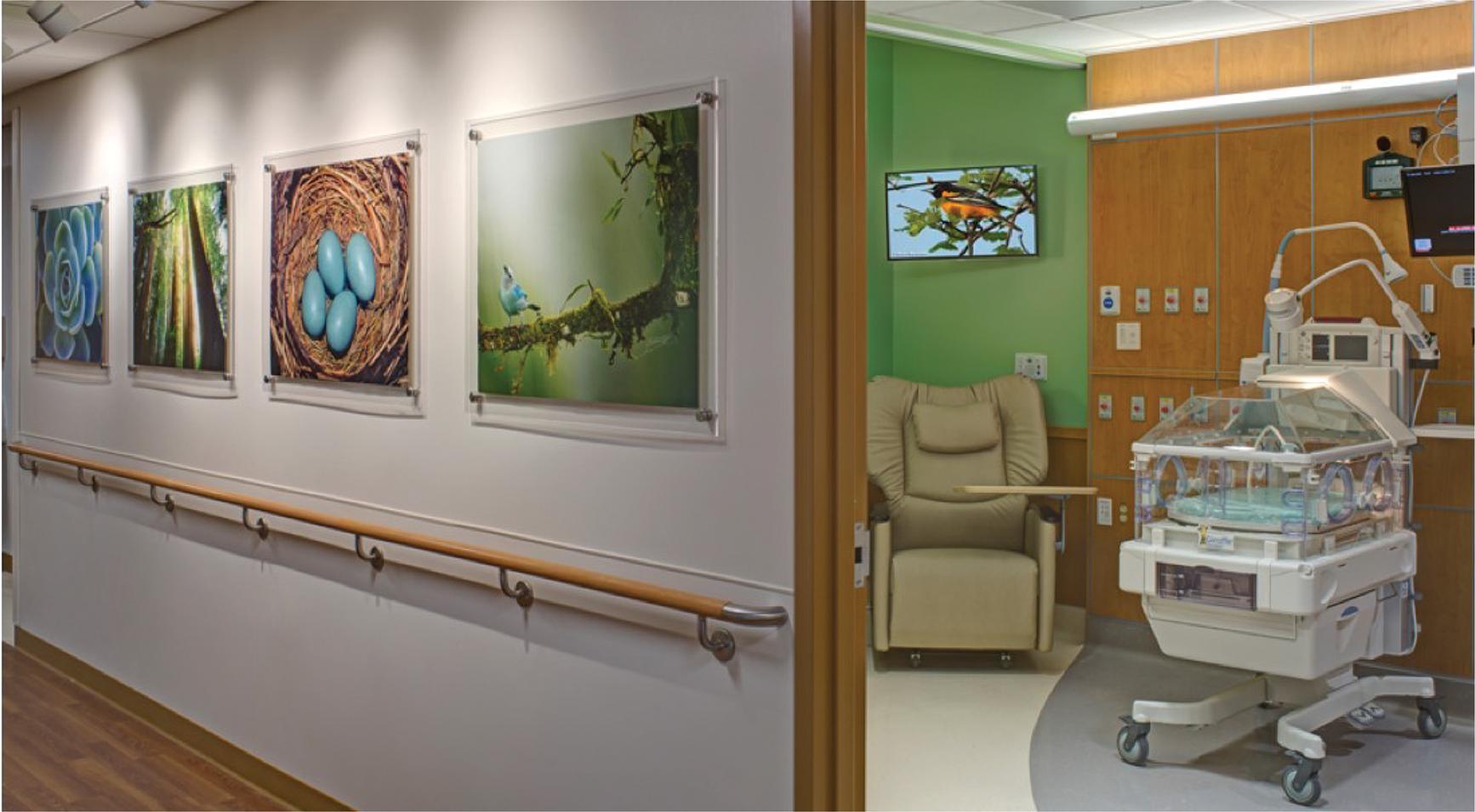
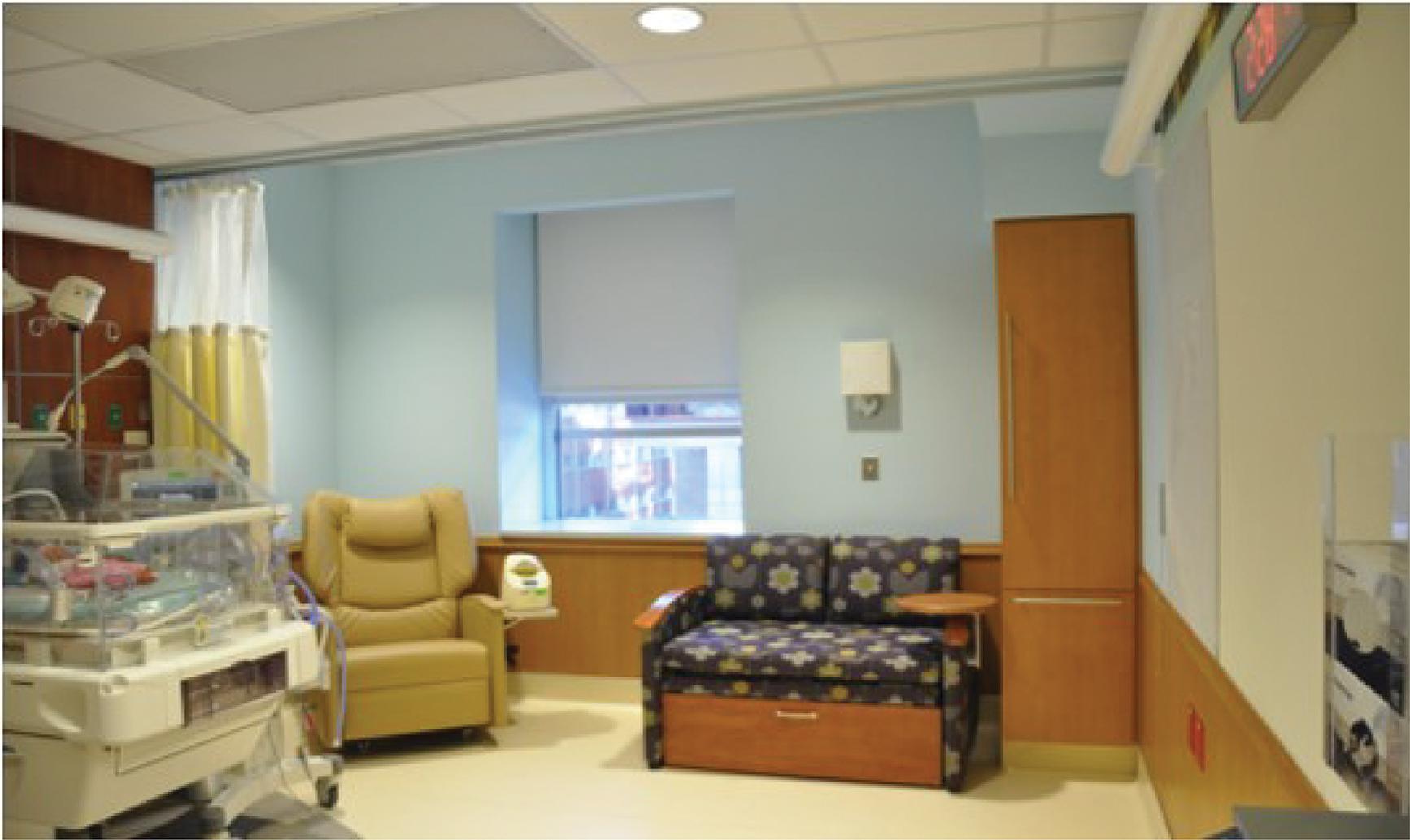
In the NICU environment, the needs of multiple parties must be balanced. Newborn and infant patients require minimal noxious stimuli ( Figs. 1.5 and 1.6 ) and the presence of positive stimuli to support appropriate development. Parents want to be able to assist with the care of their infants and to have privacy while living in the unit with their infants (see Fig. 1.4 ). The staff needs to have the ability to care for patients in a low-stress and amicable working environment (see Fig. 1.6 ). By the 1990s, preterm infants were increasingly found to be uniquely vulnerable to the effects of negative sensory stimuli, stress, and sleep-cycle disturbances.
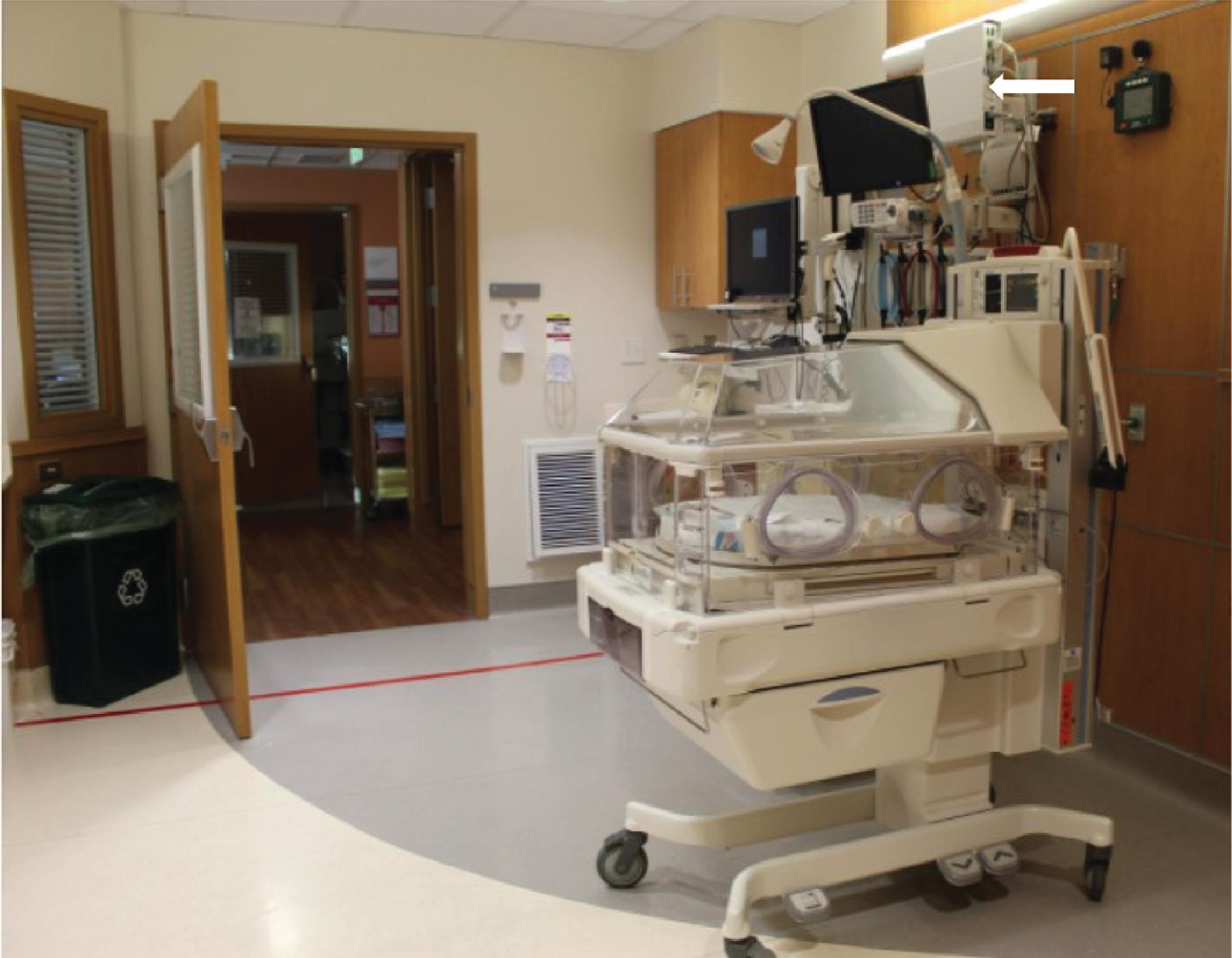

One negative sensory stimulus is noise, compared with sound. The goal for the sound environment in the NICU, especially when considering preterm infants whose auditory organs and neurologic pathways are still developing and maturing, should always be a minimization of noxious noise while maintaining exposure to positive sounds as would happen within the womb (see Fig. 1.5 ). The negative effects of noise, especially high-frequency noise, on preterm infants include short-term effects on the stability of cardiovascular and respiratory systems, , disruption of sleep patterns, and potential long-term harm to the auditory and nervous systems. ,
There has long been a recommendation to reduce sound exposure in the NICU so that it does not exceed a level greater than 45 dB for preterm infants and term infants who are ill. As was intended from the design, sound exposure is decreased in SFRs compared with open-bay NICUs. , An unintended consequence of the reduced sound environment appears to be delayed language development at 2 years of age in former preterm infants from SFRs compared with their open-bay counterparts.
There is a positive correlation between preterm infants’ exposure to parental speech and their quantity and quality of vocalizations at postmenstrual ages of 32 and 36 weeks, indicating that positive sound is beneficial to their development. Evidence shows enhanced development of the auditory cortex after exposure to recordings of maternal voice and heartbeat in infants born extremely prematurely, compared with routine NICU sound exposure.
The modification of noise in the NICU environment has been shown to decrease transitory noise after the implementation of clinical mobility communication systems (CMCS) such as smartphones and the elimination of overhead pages. In one study, the percentage of sounds that exceeded the thresholds recommended by the Environmental Protection Agency and International Noise Council decreased from 31.2% to 0.2% after the implementation of CMCS.
The benefit of music as a positive stimulus has also been explored. In one study, playing Brahms’ lullaby sung by a female vocalist to late preterm infants was noted to reduce sleep interruptions and increase brain maturation patterns measured by amplitude-integrated electroencephalogram. This study suggests that singing to preterm babies may have implications for their brain development. The SFR NICU plan reduces infants’ exposure to harmful noise. Future areas of study will need to examine how to provide positive auditory stimuli, more closely mimicking the environment in the womb, to the developing infant.
Become a Clinical Tree membership for Full access and enjoy Unlimited articles
If you are a member. Log in here